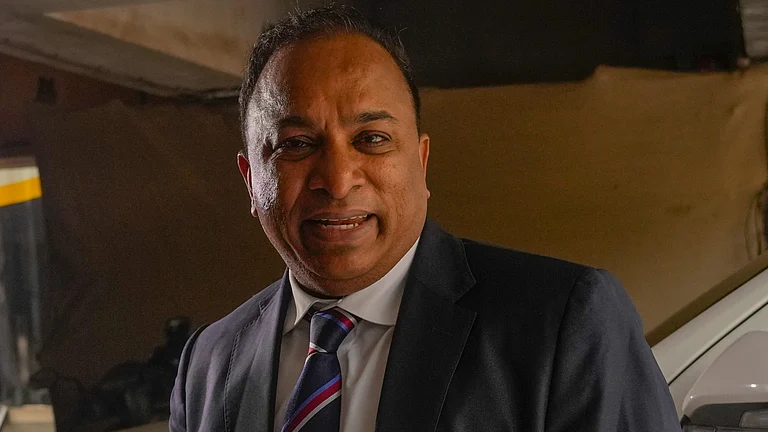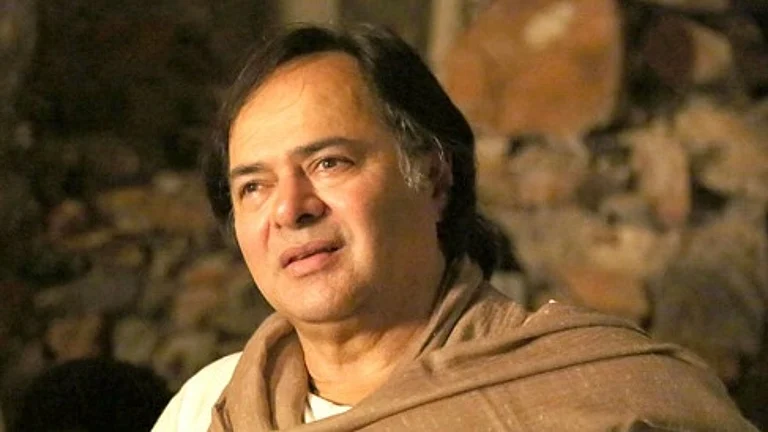Orey o pagla bhola
De re de proloy dola
Gorad gula jorse dhore hyachka taney
(Oh, you frenzied Shiva
Shake the prison bars with all your might
Pull them apart!)
What would it sound like if someone set the lyrics of the Indian National Army’s (INA’s) marching song, Kadam Kadam Badhaye Ja, to the tune of the popular Bollywood numbers Chhai Chappa Chai or Roja Jaaneman? It could possibly sound something like the A R Rahman version of Karar Oi Louho Kopat that the Oscar-winning music composer created for the movie Pippa. That’s what has been the essence of the reaction of a wide number of Bengalis since the release of the song earlier this month.
The rendition has run into a massive controversy, with Bengalis living around the world—in West Bengal, Tripura, Assam, Bangladesh and expatriates—expressing their outrage, alleging that Rahman ‘killed’ the song.
It is no ordinary song. Penned a century ago by a 22-year-old, Kazi Nazrul Islam, the song titled Bhangar Gaan (The song of destruction) calls for violent jailbreaks and infused new enthusiasm in India’s freedom struggle, especially in Bengal—now divided into Bangladesh and the eastern Indian province of West Bengal. The fiery lyrics were set to a martial tune. Here is a translation of the first stanza:
Oh, break open the iron gates of prison!
Wipe out the blood-stained altars
Where chains are worshipped
Oh, young Shiva!
Blow your trumpet of doom
May the flag of destruction fly high and pierce through the walls
“Brother, every time the warder closed the iron gates of the prison, I was reminded of that song of Islam—Karar oi louho kopat, bhenge fyal, kor-re lopat,” ‘Netaji’ Subhas Chandra Bose told his friend, Dilip Kumar Roy, according to the latter’s essay titled, Sangeet Sadhak Nazrul. Roy was friends with both Bose and Islam.
Bose’s December 15, 1929, speech, on the occasion of felicitating Islam at the Albert Hall in Kolkata, reflects what Roy recalled. Bose famously said in the speech that Islam’s songs inspired even a “matter-of-fact person” like him to sing during incarceration days. “When we go to war, we’ll sing Nazrul’s war songs. We shall sing his songs when we are in jail too,” Bose had said.

According to Pranatosh Chattopadhyay’s essay in Nazrul Smriti, Islam himself sang this song often during his internment in Hooghly Jail in 1923.
Over the years, Karar Oi Louho Kopat went on to rank among the likes of Rabindranath Tagore’s Amar Sonar Bangla (later Bangladesh’s national anthem) and Dwijendralal Roy’s Dhono-dhanyo Pushpo Bhora that few Bengalis in the past 100 years may not have heard. For many decades, Bengalis grew up listening to these songs—at functions in their schools or those organised by local clubs or cultural organisations.
Karar Oi Louho Kopat is different, in the sense that it is a war song—calling for total rebellion and direct action. In Bangladesh, where Islam is the national poet, the song has even higher emotional value for being one of the songs of the 1971 Liberation War.
It is difficult to describe in words how the original composition sounded like—those interested may find Girin Chakraborty’s version recorded in 1949 or the Calcutta Youth Choir’s version. One can also find on online platforms a rare and unconventional, but powerful rendition by the late communist freedom fighter, Sadhan Gupta, with the harmonium as the only accompaniment, recorded when the former parliamentarian was in his 80s. The song used to be sung inside jails by both Congress workers and the communists.
Many Indian patriotic songs have multiple variations in their temperament, music and rendition. Songs do get transformed. Vande Mataram has been sung in widely varying ways. Tagore is credited for the first public performance of Vande Mataram in 1896. The version recorded under Tagore’s supervision in 1937, which was largely followed in the 1948 version, recorded by Rabindra Sangeet stalwarts, Debabrata Biswas and Suchitra Mitra, among others, is quite different from how the song became popular in the 1930s and 1940s and got adopted as India’s national song, which is captured in the All India Radio (AIR) recordings.
But Pandit Omkar Nath Thakur’s version of Vande Mataram aired by AIR on August 15, 1947, was completely different from both. In 1952, Hemanta Mukherjee set it to an entirely different tune for the film, Ananda Math, named after the Bankim Chandra Chatterjee novel, where the song first appeared in 1882. The Lata Mangeshkar and Hemanta Mukherjee versions created for the Ananda Math film continue to be popular. Bhimsen Joshi sang it differently at the Central Hall of Parliament. In 1997, Rahman came up with his legendary creation, Maa Tujhe Salaam, using the Vande Mataram slogan.
The problem with Karar Oi Louho Kopat, as Bengalis pointed out on social media and in mass media comments, is that Rahman completely missed the spirit of the song. The lyrics of Vande Mataram leave a wide scope for interpretations and expressions, but Karar Oi Louho Kopat, much like Kadam Kadam Badhaye Ja, is a war song. It’s a “blood-boiler,” as many of them wrote.
Oh, see the storm approaching
Don’t waste time now!
Come on, shake up the foundations of the mighty prisons
Kick open the locks!
Burn! Burn! Raze down the prisons!
According to journalist, Arka Deb, who edited the book, Kazi Nazrul Islam’s Journalism: A Critique, Islam penned the song at the request of ‘Deshbandhu’ Chittaranjan Das’s wife, Basanti Debi, following his arrest on December 10, 1921. It was published in the newspaper Banglar Kotha on January 20, 1922, under the title Bhangar Gaan (The song of destruction). It was published as part of the book titled Bhangar Gaan in 1925, and subsequently banned and confiscated by the British authorities.
“Artists do deconstruct existing works of art. But this is no deconstruction, as Rahman’s version totally denies the history of the original composition. The song gives one an adrenaline rush. It is meant for that purpose. I would not have possibly complained if a heavy metal band used modern percussion to express the feel of war-drumming,” Deb told Outlook.
Deb pointed out that despite the song’s lyrics going out of circulation, and with no recording because of the British ban, it still survived in public memory for 25 years until 1949 when the book was republished, and Girin Chakraborty recorded the song for the film Chattogram Astragar Lunthan. “I don’t know how many songs have survived only in public memory for a quarter of a century,” he says.
Little wonder then that a glance at the comments section of the song, uploaded on YouTube, reveals the large majority of the 30,000 comments in just a week came from Bengalis living in different parts of the world, especially West Bengal and Bangladesh, condemning Rahman’s experiment.
Afroza Rahman from Bangladesh wrote, “I have always loved and respected your work a lot. But, sir, this time the rendition you have done to our national poet’s song has left all of us thunderstruck and speechless.” A number of comments opined that a blood-boiling, revolutionary song had been turned into a “lullaby”.
The outrage prompted the makers to issue clarifications and tender apologies. They said the music was changed with due permission from the Nazrul family members, who hold the copyright.
Despite every possibility that this new song is an experiment from a musical genius that has gone wrong, and the audience’s right to praise or criticise artistic creations, asking for an apology for a displeasing work of art was perhaps a little too much.


























